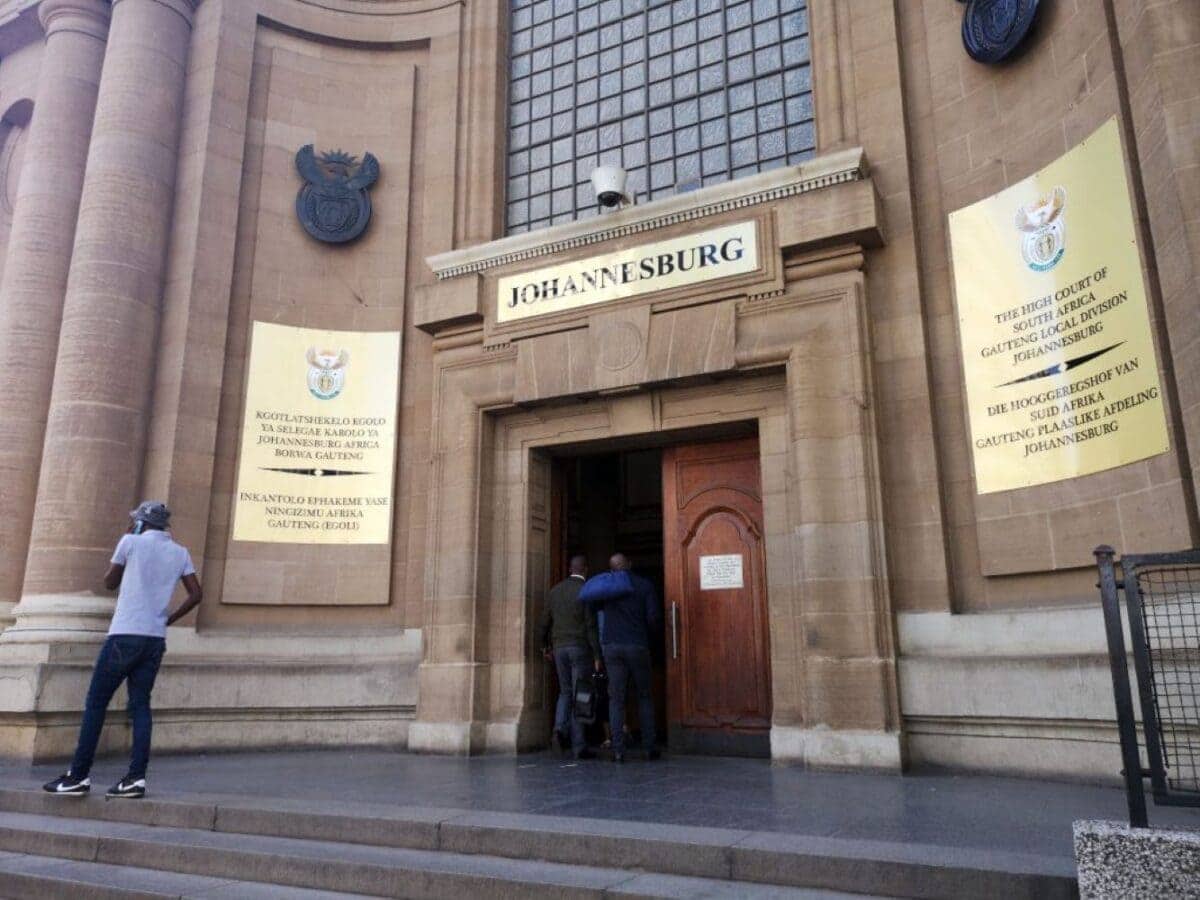Government and civil society unite to overhaul lifts, facilities and streets around the Johannesburg High Court to improve safety and services.

A remarkable agreement between two national government departments and Jozi My Jozi paves the way for the revitalisation of the High Court in Johannesburg and its precinct in Pritchard Street.
This month, Minister of Justice and Constitutional Development Mmamoloko Kubayi, Deputy Minister of Public Works and Infrastructure Mpumi Zikalala and Jozi My Jozi chair Prof Maurice Radebe signed a historic agreement which gives Jozi My Jozi and its partners the go-ahead to fix long-standing maintenance, safety and physical urban environment issues around the court buildings.
Jozi My Jozi has already proven what civil society can do when it puts its mind to it: the complete refurbishment of the Nelson Mandela and Queen Elizabeth Bridges through the cleaning of walkways, removal of graffiti, installation of solar lighting, painting and enhancing security on the bridges.
Revitalising the Johannesburg High Court precinct
Since its inception in 2022, Jozi My Jozi has grown into an ecosystem of 146 partners that continues to enable the implementation of projects within the inner city and Soweto, and includes the City of Joburg, Gauteng provincial government and, now, relevant national government departments.
This latest initiative is ambitious in its scope, with everything from lifts to restrooms to cleaning up the surrounding streets forming part of the project.
ALSO READ: Court interdicts Operation Dudula from targeting foreign nationals at hospitals, schools
Jozi My Jozi CEO Bea Swanepoel said: “No mission is too big for us. If we consider something as beneficial to the people of Joburg, it is something worth doing. We have many partners who are good corporate citizens and want to see the city working and functional.”
Swanepoel said the agreement is a significant landmark for Jozi My Jozi as it completes a full circle relationship with all three spheres of government.
The work that needs to be done at the court itself will run into tens of millions of rands, include cleaning up the precinct around Pritchard, Von Wielligh and Von Brandis streets so judges, magistrates, court personnel and members of the public going to court can move around safely.
Tens of millions of rand for work done
Ablution facilities in the court building, working lifts, back-up water storage, electrical power solutions, proper seating and back-up air-conditioning form part of the work to be carried out by Jozi My Jozi and its partners.
“The court is an important institution in the inner city; it’s a place where justice is brought to the people. We also understand that government has limited resources, but we are confident that we can secure the necessary funds to carry out this work,” Swanepoel said.
ALSO READ: Joburg to fast-track informal trader verification after court ruling
Innocent Mabusela, Jozi My Jozi’s head of stakeholder relations and communications, said extensive discussions have taken place with both the department of justice and constitutional development and public works and infrastructure. The memorandum of understanding, he said, agrees on the scope of work to be done, the transparent procurement rules that will be followed and proper due diligence.
“Next, we will be doing a full investigation of the extent of the project and when the work starts, we will aim to do as much of it during court recess as possible.”
“This agreement demonstrates that fixing the city is not just an inner-city thing.”
Strengthening access to justice through infrastructure support
Kubayi’s spokesperson Terrence Manase said although the justice department has, in the past, worked with civil society, this particular partnership with Jozi My Jozi is significant because of its clear focus on strengthening access to justice through infrastructure support at the High Court in Johannesburg.
“While the department continues to be guided by government’s procurement and public accountability frameworks, the minister noted that this memorandum of understanding represents a meaningful and well-structured collaboration.”
ALSO READ: ‘South Africans only’: Morero stands firm as City of Joburg and informal traders’ clash in court
Manase said infrastructure needs within the justice system are extensive and cannot be met by government alone. “For this financial year, the department requires approximately R1.6 billion for infrastructure upgrades across the country, in a context where many critical sectors of government are also competing for limited resources.
“In this regard, the contribution from Jozi My Jozi is welcomed as a direct investment in the justice system.
“The minister is encouraged by this partnership and hopes to see more private sector and community-led collaborations that meaningfully support the justice system.
“She reiterated that this is a model of partnership that is both impactful and aligned with the broader goal of improving access to justice for the people of South Africa,” he said.
A brief history of the High Court in Johannesburg:
The Transvaal High Court, Pretoria, was established in 1877. Johannesburg was only a circuit court of the high court until after the first Anglo-Boer war when the High Court of the Witwatersrand was established in Johannesburg in the mid-1880s.
ALSO READ: High Court rules against Hawks in City Power corruption probe over R67m tender
During the second Anglo-Boer War both courts ceased to function and the Supreme Court of Transvaal was re-established only after the end of the second Anglo-Boer War in 1902, when Transvaal became a self-governing colony of the British empire.
The Witwatersrand Local Division was established around the same time and had concurrent jurisdiction over Johannesburg and surrounding areas. In 2009 the name changed to the South Gauteng High Court and since 2013 the name of the court is the Gauteng Local Division of the High Court of South Africa.
The court building has 42 courtrooms, of which 18 are criminal courtrooms.
The building was designed in 1904 by McIntosh & Moffat in an Edwardian style, with pedimented corner gables and was later extended by two floors and redesigned in 1932 by JC Cook & Cowen to its current art deco appearance.
The building constitutes an important building block in the historic layered development of Gandhi Square and remains an architectural landmark.
ALSO READ: Court holds ex-SABC board accountable for Motsoeneng’s R11.5m ‘success fee’
Several landmark cases have been heard in this court, including:
- State v Makwanyane (1995) that led to the abolition of the death penalty in South Africa;
- Rail Commuters Action Group v Transnet (2004) established that rail service providers have a constitutional obligation to protect the safety of commuters;
- Mohamed v President of the RSA (2001). This case focused on the constitutionality of extraditing an accused person to a country where they might face the death penalty; and
- Prolific killer Daisy de Melker’s trial began at the Johannesburg High Court on 17 October 1932. She was found guilty of murder and sentenced to death.






